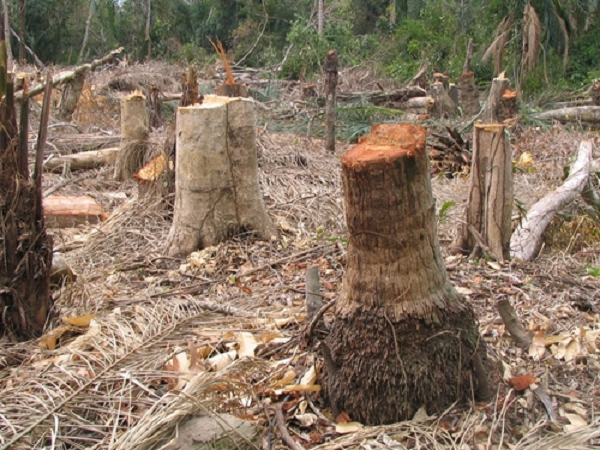
Covering about 30 percent of the earthâs land surface, lush green forests have a wealth of plants, flora, fauna, minerals and animal species. Deforestation means reducing resources available on our planet and it can endanger life. Despite this fact, the trees and forest cover on land is fast diminishing. Trees are felled for numerous reasons like timber, fuel, mining, charcoal, agriculture, etc. Deforestation is affecting our lives enormously. Let’s check out seven facts about deforestation:
1. Woods are fast dwindling
There is a dire need to preserve forest cover. The rainforest stretch has reduced to half in recent years reaching from 14% to a mere 6 percent. Most predictions have forewarned that rainforests could disappear altogether in the next 100 years. Every second about a thousand acres of jungle cover is wiped out. When forests deplete, we also shrink our wealth of natural resources. They contain many different species of plants and herbs. Honey, resin and many other minerals sourced from forests are lost when we raze them out. Even today around 12 million hectares of jungles are used up every year.
2. Reasons for deforestation
Agriculture is the prime cause of deforestation, most of the jungle cover is razed out to grow cash crops and food grains. Farmers also reduce forest cover to turn it into grazing land for cattle and livestock. The second biggest driver of deforestation is chopping of trees for timber. Sometimes overgrazing and wildfires also reduce forest cover. Other common reasons for deforestation are mining, generating hydropower, charcoal production, fuel requirements, etc.
3. Desertification
As more and more trees are cut off, the fertile soil will gradually turn into a barren desert. One of the biggest hazards of deforestation is desertification. If the shady trees and chopped down then the soil is exposed directly to the harsh and hot sun. It therefore dries out very quickly. The frequency of rainfall also declines as trees have a big role to play in completing the water cycle. They return water vapor back into the atmosphere. So if trees are cut down then desert areas will also expand.
4. Climatic changes
The incidence of natural calamities will increase due to deforestation. Areas where the forest cover has altered are more likely to be stricken by floods, cyclones, storms, fires, etc. This mainly happens because more carbon dioxide is released into the air altering its basic composition. Thickset forests usually sop up greenhouse gases and carbon dioxide in the air. So if their expanse shrinks then the amount of greenhouse gases and carbon dioxide in the air multiply. Mudslides also become common along slopes deprived of vegetation cover. In addition, jungles absorb excess water and preserve it when there is a limited supply thus preventing floods as well as droughts. Therefore forests are very important to keep global warming and climate change threats at bay.
5. Effect on soil
Cutting down trees also changes the composition of soil and nutrients in it are lost. Roots hold the soil together and in their absence rain water washes away nutrients. Deforestation leads to soil erosion and increases its salinity. Even the carbon composition of the soil is affected by deforestation. Soil turns unfertile and such land cannot be cultivated for agriculture.
6. Threat to animals
Jungles are a home to almost 70 percent of plants and animals on the planet. Lives of animals as well as the flora and fauna is affected greatly when trees in their vicinity are destroyed. Some of them can even become extinct. Each year around 50000 species of plants and animals get exterminated. In the near future about 50 percent of the plant life from this plant could become extinct. The extreme temperature changes caused by deforestation also affect animal life. Trees make surrounding areas cool during the day and retain heat at night balancing the temperature of surrounding areas. With lesser trees, extreme temperature fluctuations will become common. Such conditions are not favorable for plant and animal life.
7. Where is it happening
About 60 percent of the deforestation is happening in seven countries around the world. These are Indonesia, China, U.S., Canada, Russia, Latin America, and the Democratic Republic of Congo in Africa. Vast stretches of forest cover have been lost in Brazil and Indonesia. This means it wonât be a long time before all forests across the world are razed down. The Atlantic forest in Brazil was initially a million square kilometers, but now it the jungle region has been reduced to less than 5 percent of its original size. Since 1950, the woodlands in Central America have been reduced by two-third. In 2001-2005, the jungle expanse in U.S. has decreased by 831 square miles.




